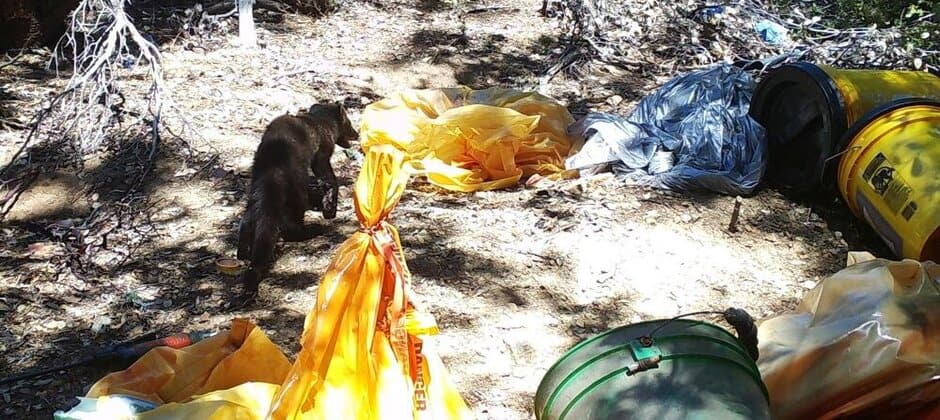Share this article
Illegal cannabis farms pose danger for at-risk wildlife
In 2015, biologists Greta Wengert and Mourad Gabriel were conducting necropsies on fishers—a candidate for listing under the Endangered Species Act at the time—to find out what was causing their mortality on the West Coast. Often, the cause of death turned out to be anticoagulant rodenticide. But where were the fishers being poisoned?
The researchers suspected illegal cannabis farms were the culprit. These farms often appeared on public lands adjacent to private land. That prompted them to wonder if this problem might grow in the future. As they looked at places that would be prime areas for cannabis farms, they reached a concerning conclusion that reached beyond fishers.
In a study published in PLOS ONE, the team found the habitat ranges of three threatened species—the Pacific fisher (Pekania pennanti), the Humboldt marten (Martes caurina humboldtensis) and the northern spotted owl (Strix occidentalis caurina) overlapped with ideal cannabis farm locations, potentially exposing the animals to pesticides.
Investigating illegal farms in California and southern Oregon proved difficult for the researchers, so they looked for partners for help. “We spent a lot of time reaching out to local, state and federal law enforcement agencies to get as much information as possible, and to inquire about partnerships that would allow us to investigate these sites directly,” said Wengert, the lead author of the study and the executive director of the Integral Ecology Research Center. “We knew this partnership would be required in order to be able to document these sites for all the environmental impacts they impose on our public lands, and it likely has been the most productive and rewarding partnerships our organization has been a part of.”
With help from law enforcement, she and her colleagues created models to predict areas in national forests where illegal cannabis cultivation would be likely. Cannabis farms, they concluded, were most likely show up in low- to mid-elevation forests that recently had burned. Overlaying areas that growers would prefer with habitat distribution maps for the three species, they found a high degree of overlap, particularly in the Sierra Nevada, where prime cultivation areas overlapped with fisher denning habitat. Humboldt marten seemed to be slightly less at risk.
The biggest risk of these illegal cultivation sites to wildlife is both intentional and secondary poisoning, Wengert said. Since growers often cultivate cannabis throughout the breeding season of most forest wildlife, she said, nesting females and their offspring are at risk—not just of lethal poisoning but also of sublethal doses that may harm their reproductive success, behavior and overall health.
Pesticides aren’t the only threat. Growers often also clear—or at least fragment—wildlife habitats. “Trees are chopped down, brush is cleared and native soil is eroded,” Wengert said. Growers sometimes even set wildfires, which have caused further habitat loss for some species.
Because of the likely overlap between wildlife habitat and cannabis cultivation, Wengert said, it’s important to consider the threats to wildlife. “It was considered in the listing of the southern Sierra Nevada population of fisher, and should be at least a discussion point when identifying conservation threats and proposed actions for the many species that might be affected by these cultivation sites,” she said. “There are very few areas of California’s public lands that are not somehow threatened by this activity, so the number of species at risk is frighteningly high.
Header Image:
A fisher investigates the toxicant storage area of an illegal cannabis grow site on national forest land.
Credit: Greta Wengert








